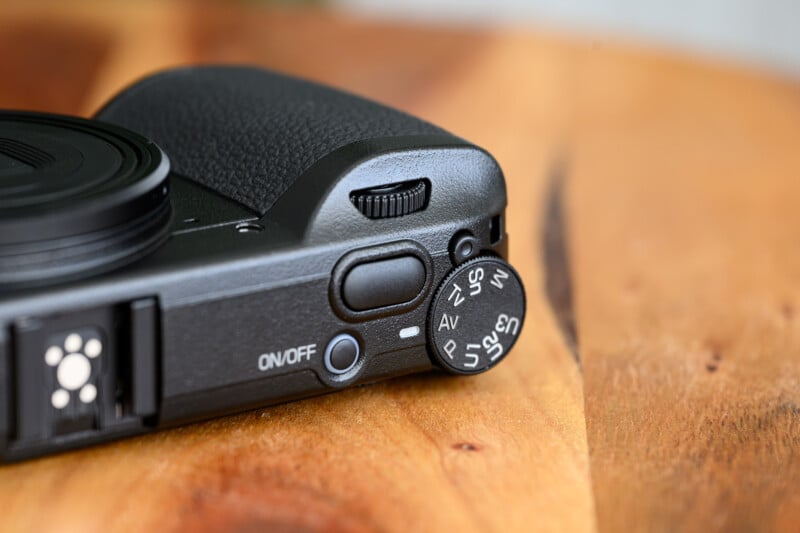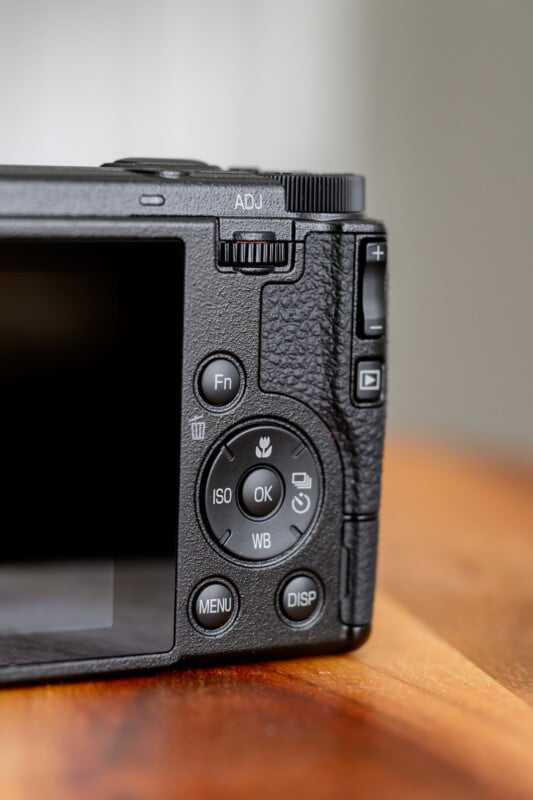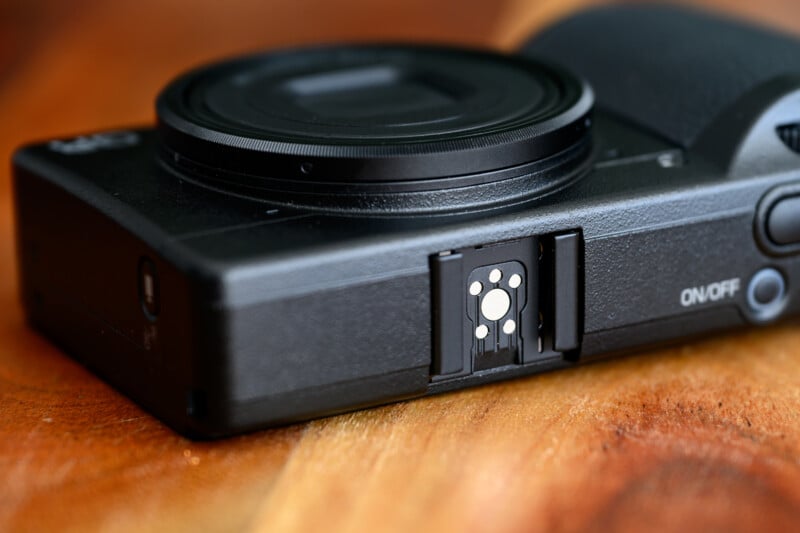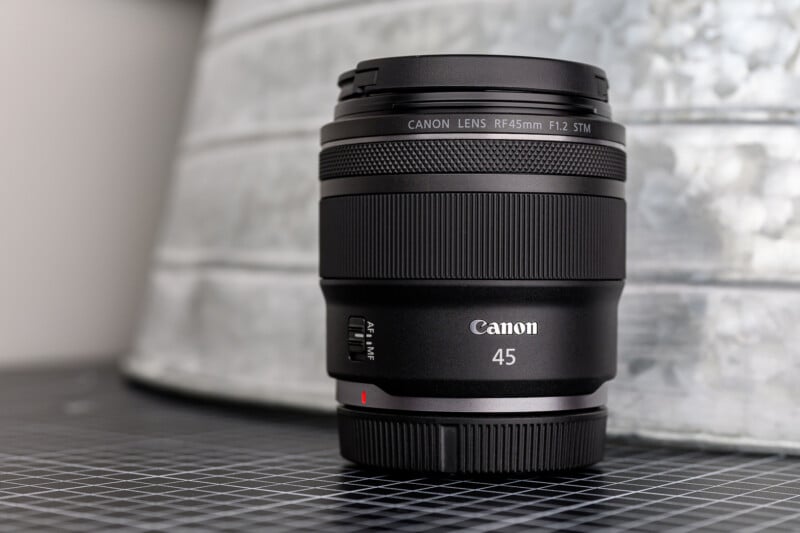
Small, pocketable cameras with fixed lenses hold an enviable position in the camera world. If a manufacturer makes one, it sells out. Sony has recently released the RX1R III, and preorders have exploded despite the high asking price. Fujifilm has been surfing the X100 tsunami since 2011. Leica has a Q series of cameras that are instantly loved by all who touch them. But Ricoh has been selling its wildly popular GR cameras, going all the way back to the analog days of 1996, when Japanese street photographers popularized the handy pocket camera. The digital GR cameras have always sold well and been coveted by their owners through three models and multiple variations.
Now we enter into a new series with the $1,500 GR IV, and it promises a plethora of upgrades to keep the GR cameras firmly entrenched on the streets and alleyways of the world.
Ricoh GR IV Review: How It Feels
There is a reason that the GR is such a popular design, and it always comes back to the ultra-compact nature of the camera. Unlike some other cameras that promise pocketability, the GR actually fits in a slim pocket, and the GR IV is the thinnest one yet. Although the physical dimensions are similar when looking at the front of the camera, the width has been reduced by two more millimetres. The GR IV only weighs 9.24 ounces (262 grams), and that is when fully loaded with battery and card.
The grip is still as wonderful as always, and the GR IV is designed to be easily used with only one hand. Ricoh decided to return to the control scheme more akin to the GRII, which is a wise decision. We get two proper command dials again with push-in buttons, and the vertically oriented plus/minus exposure bar as well. The back LCD panel could see some refinement in the future, as it sits with just over a million dots in resolution. I don’t expect it to rotate given the thin dimensions of the camera, but I would like it to be sharper and brighter. There is no EVF, but frankly, using an optional Ricoh GV-2 optical finder unit in the camera hot shoe is super fun to do, and surprisingly functional too.


The top mode dial is easy to use and locks in place to avoid any accidental changes. There is now a snap function priority mode on the dial, which allows the user to customize what depth of field they want and what distance they would like the focus to jump to. This makes shooting grab shots from the hip easier than ever, and you can think of it as an intro to Ricoh’s classic snap focus method. Of course, you can always set up Ricoh’s now-famous snap focusing in any of the other shooting modes as well, in which case, the distance is set, but you are free to expose to your preference.
The GR line of cameras has often been maligned for allowing dust and pocket lint to find their way into the lens assembly and block the sensor. This unfortunate situation requires a complete teardown of the lens assembly to clean. The GR IV seeks to address this issue with better dust seals around the lens barrel and new sensor coatings to repel dust. I wasn’t willing to torture test the model provided for review, but any attempt on the part of Ricoh to protect the internal mechanisms is a welcome one.


Battery life has always been an issue with GR cameras, given the tiny dimensions, but the GR IV now features a larger battery. This should bring the CIPA-rated shots up to about 250, which is still on the low side, but a needed improvement nonetheless. The compromise is a switch to a microSD card in order to make as much room as possible for the new battery. MicroSD cards are fine and affordable, if not a little annoying to use and easy to lose. Thankfully, the GR IV sports 53GB of internal storage, which goes a long way toward mitigating the issue of the tiny memory card. Overall, it seems that Ricoh has taken some important steps to address as many issues as possible with its previous camera bodies, and I think they largely succeeded.


Ricoh GR IV Review: How It Shoots
At the heart of the camera, we now have an updated BSI 26-megapixel sensor likely similar to the Sony a6700 or Pentax K3 III. I’ve always liked the image quality out of this chip, and it brings the GR IV more in line with its contemporaries. Although the sensor is not new to the market, existing GR users will notice improvements in dynamic range and high ISO quality. We also get a new lens design, adding an extra aspherical element and a refined design, despite the thinner dimensions of the camera.

The 18.3mm f/2.8 lens still gives a good amount of light and a 28mm full-frame field of view, which I far prefer to the more common 35mm choice. However, the original lens had some issues with corner sharpness, and I’m happy to report that the new lens design addresses this issue. Sharpness is great in the center of the image at f/2.8 and still very decent in the corners. Stopping the lens down slightly will give a nice boost to overall contrast and sharpness right across the frame.


The built-in image stabilizer has also been improved this time around, now providing roughly six stops of stabilization with the Ricoh five-axis SR module. All of these improvements should help to give just a little more clarity and resolution to the GR IV images, compared to their predecessors. If you want a little boost of light in darker conditions, Ricoh also has a new GF-2 flash unit that can be paired with the GR IV. Oddly, this works in an automatic, but non-TTL mode of exposure, which should give the stark point-and-shoot flash aesthetic that is so popular today. This new flash unit will not provide any sort of automatic exposure assistance if you use it on older GR bodies, though. There is a standard TTL hot shoe on the Ricoh GR IV if you wish to use more advanced flash units.

![]()
![]()
Unfortunately, autofocus is still an issue on the GR IV. The tracking AF module is unreliable, with a strong tendency to lose focus on the subject and search wildly for another area. The face and eye detection mode does work well for portrait work, but you won’t find any other modes for pets or vehicles. I found myself sticking to old-school single-point focusing or a wider zone for faster street action, but I largely avoided any continuous focusing modes.

It’s not all doom and gloom, though. Ricoh has improved the focusing speed in the lens, so even though I was using a more simplistic focusing mode, the focus jumped right on it quickly. You always have the snap-focusing tool as well if you want to shoot with a preset distance. Rioch is also saying that the startup time is the fastest ever on a GR camera, and it is, but the GR III startup time is only marginally slower and never bothered me to begin with.

![]()
![]()
Ricoh GR IV Review: Fully Improved
![]() Ricoh knows that the GR cameras are its hallmark product and have done a great job at tackling the issues that customers have voiced about the current product line. Almost every aspect of the GR IV is improved, with meaningful image quality bumps, and faster focusing and operation all around.
Ricoh knows that the GR cameras are its hallmark product and have done a great job at tackling the issues that customers have voiced about the current product line. Almost every aspect of the GR IV is improved, with meaningful image quality bumps, and faster focusing and operation all around.
What people already love about the GR hasn’t changed, and the slim design and excellent customization options will make this GR IV instantly popular. Ricoh has also tweaked its black and white modes, added two cinematic-looking presets, and provided a Ricoh GR World app to create a community for its users.
I’m confident that Rioch will have no issues selling out of the GR IV. However, we are seeing the same price increases here that we are seeing with other brands, too. At $1,500, the Ricoh GR IV is an expensive pocket camera, but it still comes in at a lower price than the Fujifilm X100VI. It’s nice to know that, despite the almost guaranteed level of success, Ricoh made the GR IV substantially improved over what came before it.
![]()
![]()
Are There Alternatives?
The Fujifilm X100VI would probably be the closest competitor, but it can be very hard to find due to its popularity and has recently increased in price in North America. If you like the look of 35mm lenses, it could be a better choice, but it is not nearly as compact.
Should You Buy It?
Yes. This is a smart and sleek companion for any street shooter, and the GR IV is the most pleasant and capable GR experience so far.





